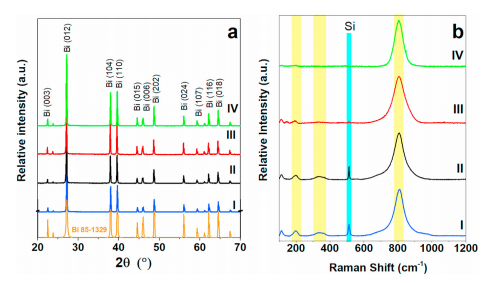
The influence of metallic Bi in BiVO4 semiconductor for artificial photosynthesis
Abstract: BiVO4 is a non-titania inorganic photocatalyst recognized as an effective visible-light-driven semiconductor that has been shown to be effective for CO2 reduction. However, some characteristics, such as a low separation rate of photogenerated electron-hole pairs and low mobility of electron-hole carriers, are still challenges to the widespread use of this semiconductor. In this paper, the influence of metallic Bi on the CO2 photoreduction activity was evaluated for the BiVO4 semiconductor. Bi–BiVO4 catalysts were prepared by microwave heating at 240 °C, employing different reaction times and magnetic stirring regimes. Metallic Bi improved the catalytic activity of BiVO4 for CO2 reduction, enhancing the absorption of visible light and promoting internal photoemission of electrons in the metal-semiconductor interface, which improves the electron density in the surface of the catalyst. This resulted in an astonishing concentration of methanol; Bi–BiVO4 prepared at 240 °C, for 5 min, and without magnetic stirring, produces around 5.0 mmol L−1 g−1catalyst of methanol and 40 μmol L−1 g−1catalyst of acetone after 240 min of reaction. The mechanism of charge transfer between the BiVO4 and the metallic Bi is influenced by the size of the microsphere crystallites, moreover, the production of methanol increased as the Bi grain size decreased.
Author(s): Brito, JF; Corradini, PG; Zanoni, MVB; Marken, F; Mascaro, LH
Journal of Alloys and Compounds
Published: 15 January 2021 Volume: 851

